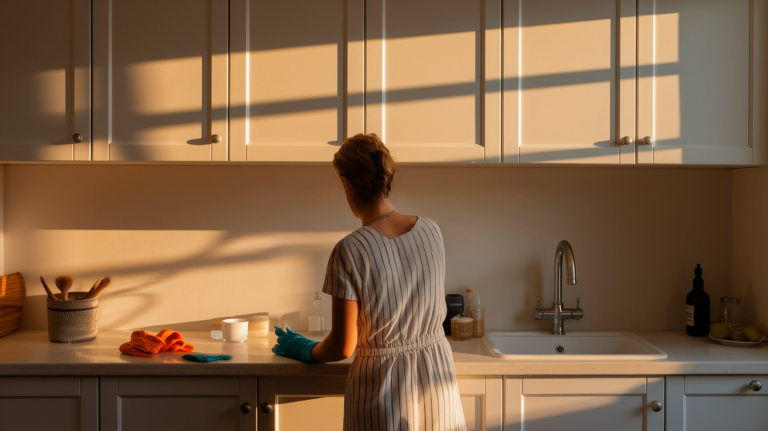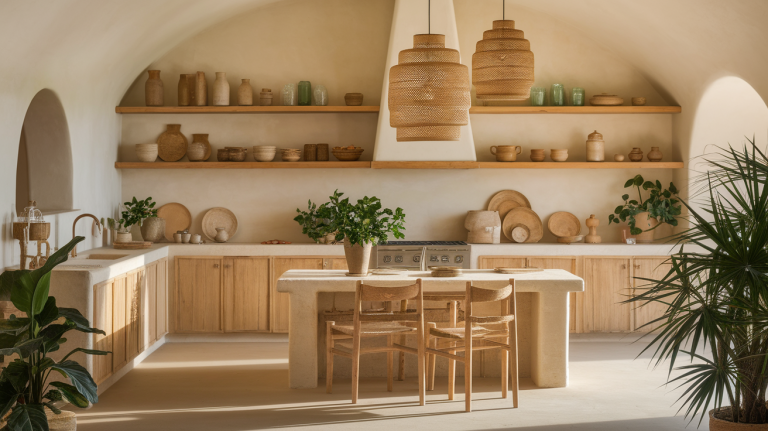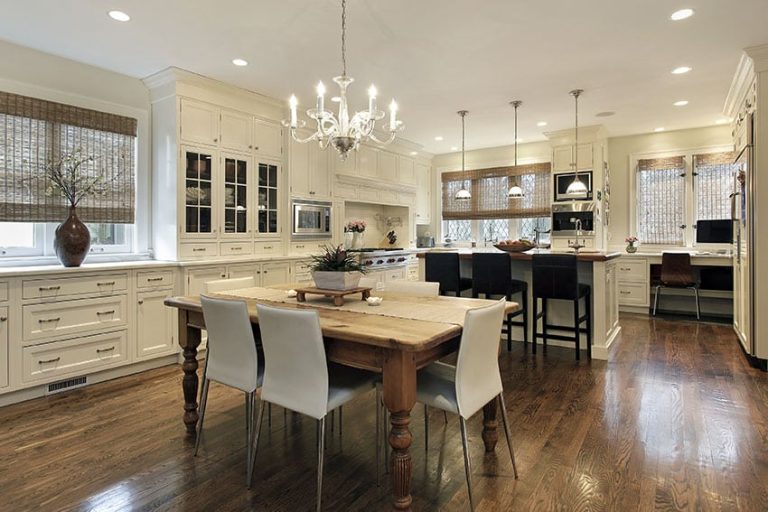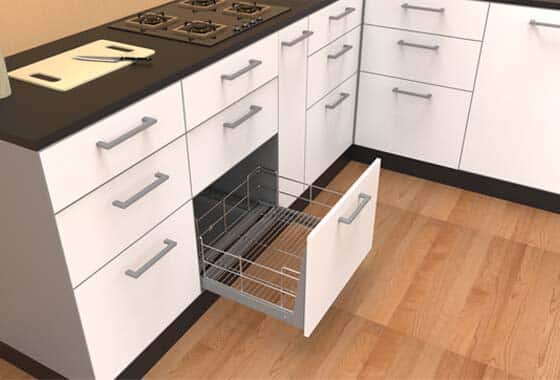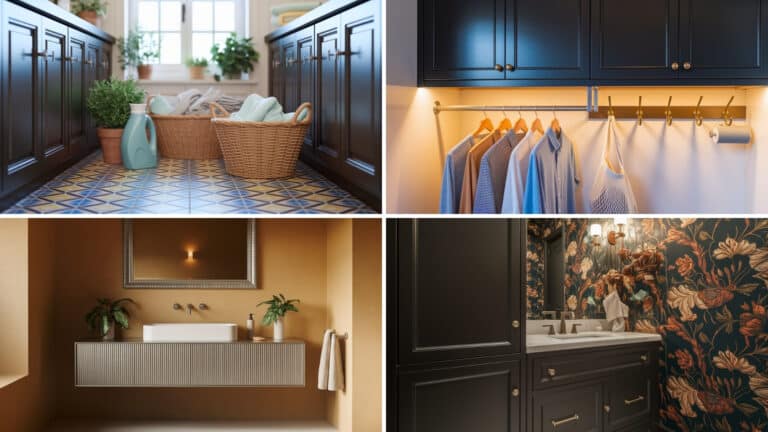Can You Use Kitchen Cabinets in Bathroom Vanity
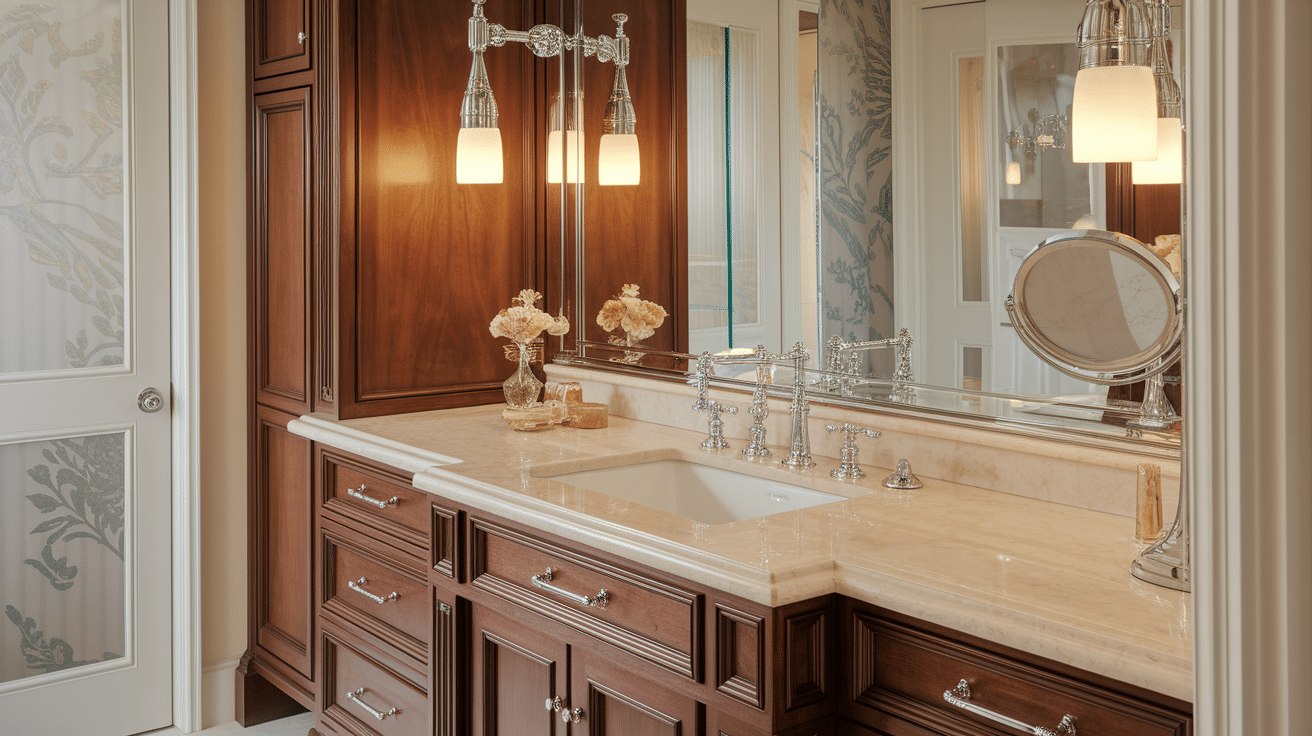
Repurposing kitchen cabinets as bathroom vanities has become popular among homeowners seeking affordable bathroom updates. This approach leverages the wide selection of kitchen cabinet styles and finishes available on the market.
Many choose kitchen cabinets for bathroom renovations because they offer more options in styles and configurations than standard bathroom vanities.
Kitchen cabinets are often less expensive for similar quality, allowing budget allocation to other bathroom elements like fixtures or tiles.
Beyond cost savings, kitchen cabinets provide design flexibility that might not exist with standard bathroom vanities, making it possible to create unique bathroom spaces.
Kitchen Cabinets vs. Bathroom Vanities
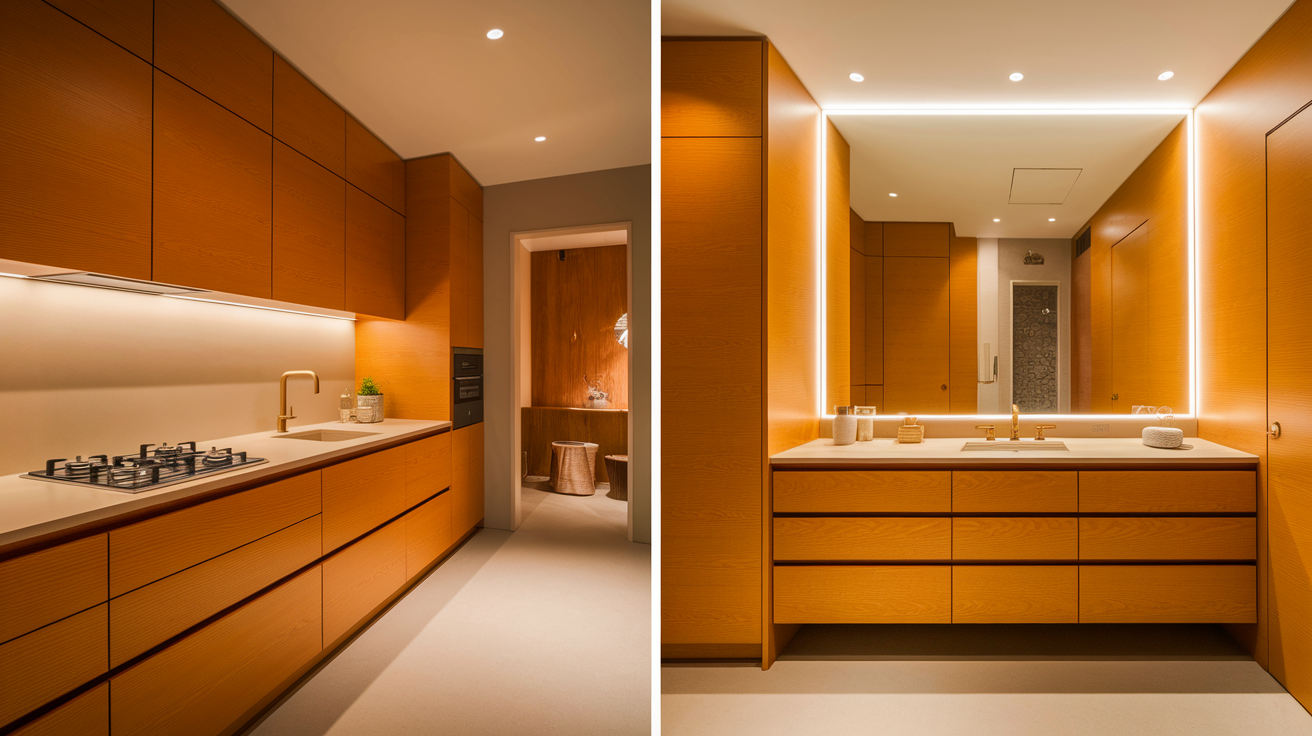
Kitchen cabinets are taller (36 inches with a countertop) and deeper (24 inches) than bathroom vanities (32-34 inches tall, 21 inches deep). This height difference affects comfort during daily use and impacts space utilization in smaller bathrooms.
Bathroom vanities feature moisture-resistant materials and sealed edges to withstand humidity. Kitchen cabinets use standard materials like particleboard that may swell when exposed to bathroom conditions, potentially reducing their lifespan without proper treatment.
Storage design differs significantly between the two. Kitchen cabinets offer deeper drawers for cookware, while bathroom vanities include plumbing cutouts and specialized storage for toiletries. Kitchen cabinets are typically 20-30% less expensive for comparable quality.
Can Kitchen Cabinets Work in Bathrooms?
Kitchen cabinets can function well in bathrooms with proper modifications. Most will need waterproofing treatments, height adjustments, and structural reinforcement to handle humidity. The cabinet material quality directly impacts long-term performance in moist environments.
Plumbing integration requires cutting holes for pipes and drains. This modification affects internal storage space and may need professional help.
Consider using solid wood or marine-grade plywood cabinets, which better resist moisture compared to standard particleboard options.
Pros of Kitchen Cabinets as Bathroom Vanities
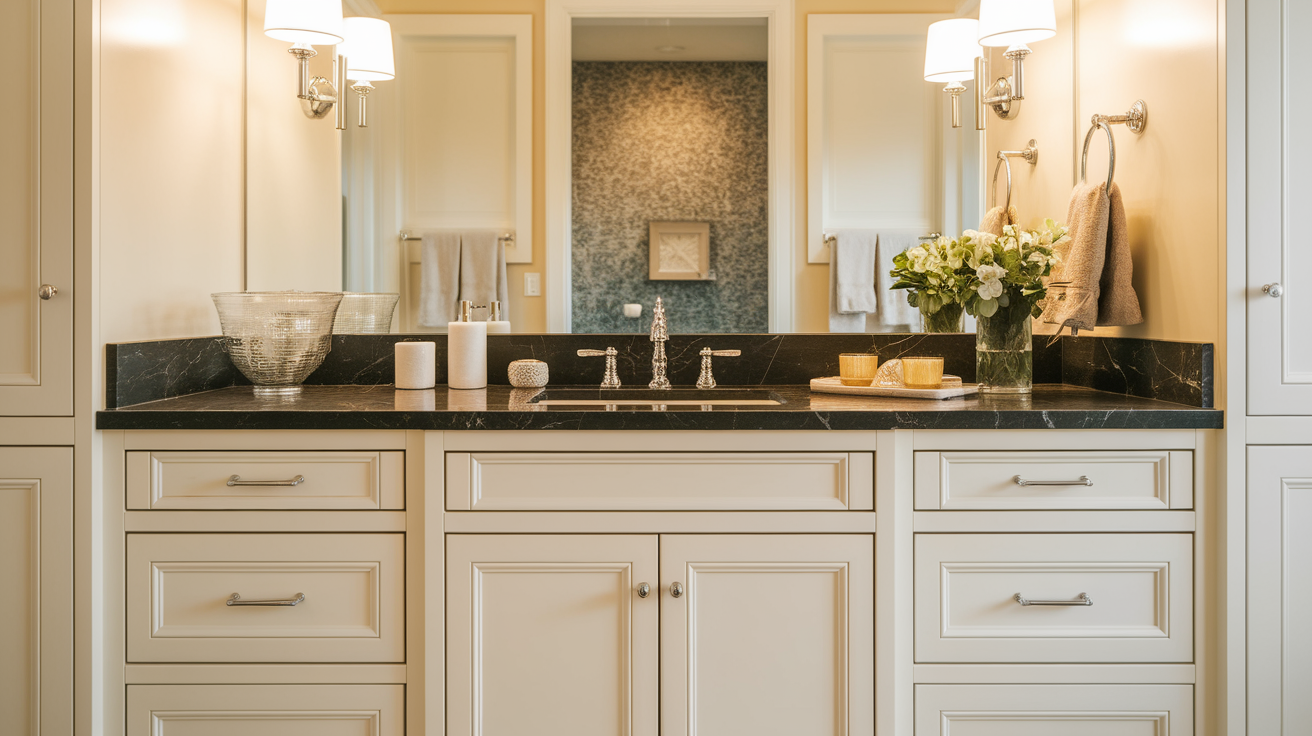
- Cost savings: Kitchen cabinets are often less expensive than specialized bathroom vanities, allowing for significant budget reduction while achieving similar functionality.
- Broader selection options: The market offers more variety in kitchen cabinet styles, sizes, and finishes than bathroom-specific options, giving you greater design choices.
- Customization potential: Kitchen cabinets frequently come with more modification options, allowing you to tailor the storage configuration to your specific bathroom needs.
- Storage capacity: Kitchen cabinets typically provide more interior space and organizational features than standard bathroom vanities, maximizing your bathroom storage capabilities.
- Ease of installation: Many kitchen cabinets come pre-assembled or in user-friendly kits, making the installation process simpler compared to custom bathroom pieces.
- Design flexibility: Kitchen cabinets work well in various bathroom styles, from traditional to contemporary, offering versatile design integration opportunities.
Cons of Kitchen Cabinets as Bathroom Vanities

- Moisture resistance challenges: Kitchen cabinets lack the moisture protection of bathroom-specific units, requiring additional sealing and treatment to prevent water damage.
- Height adjustments needed: Standard kitchen cabinets (36″) are taller than typical bathroom vanities (30-32″), potentially creating ergonomic issues without proper modifications.
- Sink and plumbing modifications: Retrofitting kitchen cabinets for bathroom plumbing requires precise cutting and interior restructuring to accommodate pipes and fixtures properly.
- Potential warranty issues: Using kitchen cabinets in bathrooms may invalidate manufacturer guarantees since they’re being utilized outside their intended environment.
- Long-term durability concerns: Even with protective treatments, kitchen cabinets may deteriorate faster in humid bathroom conditions, affecting hardware and materials over time.
How to Use Kitchen Cabinets as Bathroom Vanity
You can follow these steps to convert your kitchen cabinets into a bathroom vanity:
1. Selecting Appropriate Cabinet Types
Kitchen base cabinets make ideal bathroom vanities due to their standard height of 30-36 inches. Their design allows for simple conversion with minimal structural changes.
Look for solid wood options with strong joinery for water resistance. Second-hand or surplus kitchen cabinets offer cost savings while providing good bones for your bathroom project.
2. Essential Modifications
Standard vanity height ranges from 32-36 inches, so adjust your cabinet accordingly. Create access holes for plumbing and modify internal shelving to accommodate pipes and drains.
Strengthen the base to support sink weight using cross braces or additional supports. For tall cabinets, reduce the toe kick area to achieve proper bathroom vanity height.
3. Sealing and Waterproofing Techniques
Bathroom humidity requires thorough waterproofing. Apply multiple water-resistant polyurethane coats to all surfaces and use quality silicone caulk at every joint and seam.
Marine-grade varnish offers superior protection for wooden cabinets. Add moisture barriers on the cabinet floor and treat all cut edges with waterproof sealant to prevent water damage.
4. Sink Installation Considerations
Confirm your cabinet can support your chosen sink’s weight before cutting any openings. Measure twice and mark the sink cutout with precision to avoid costly mistakes.
Plan adequate space for plumbing connections beneath the sink. Match sink depth with cabinet height and install proper mounting brackets according to manufacturer guidelines.
5. Hardware Selection and Updates
Select moisture-resistant knobs and pulls that withstand bathroom conditions. Install quality soft-close hinges to enhance daily use and prevent cabinet doors from slamming.
Choose stainless steel or brass hardware for longevity in humid environments. Update drawer slides to smooth-gliding versions and consider adding toe-kick drawers for extra storage.
6. Countertop Material Recommendations
Cultured marble offers budget-friendly durability with good water resistance. Quartz countertops provide excellent longevity with minimal maintenance and come in various styles.
Solid surface materials allow for integrated sink options, creating seamless looks. Natural stone with proper sealing or ceramic tile works well for DIY installations with proper care.
Tips for Successful Installation of Kitchen Cabinets in Bathroom
Implement these simple tips to integrate and install kitchen cabinets in the bathroom easily:
- Material Selection for Wet Environments: Skip MDF for water-resistant plywood. Use exterior-grade adhesives for joints. Apply moisture-resistant paint for long-term bathroom cabinet protection.
- Height Modification Techniques: Cut from the bottom for height adjustments. Add blocks if needed.
- Storage Optimization Strategies: Add drawer organizers and vertical dividers. Install pull-out trays for accessibility. Modify drawers around plumbing. Use door-mounted storage solutions.
- Design Coordination with Bathroom Elements: Match the vanity with existing fixtures. Position mirrors and lighting thoughtfully. Choose complementary colors. Size appropriately for your space.
Conclusion
Converting kitchen cabinets into bathroom vanities provides a cost-effective option without sacrificing quality. The transformation requires careful material selection and proper modifications for lasting results.
The financial advantage allows you to allocate funds toward other bathroom components. Despite extra work, the wide range of styles makes this approach attractive for creating unique spaces.
Success hinges on thorough waterproofing and structural reinforcement. Taking the time to seal surfaces and plan plumbing integration will ensure your cabinet withstands daily bathroom conditions.
When making your decision, consider both immediate savings and future maintenance. With proper planning, repurposed kitchen cabinets can form a solid foundation for your bathroom renovation project.

